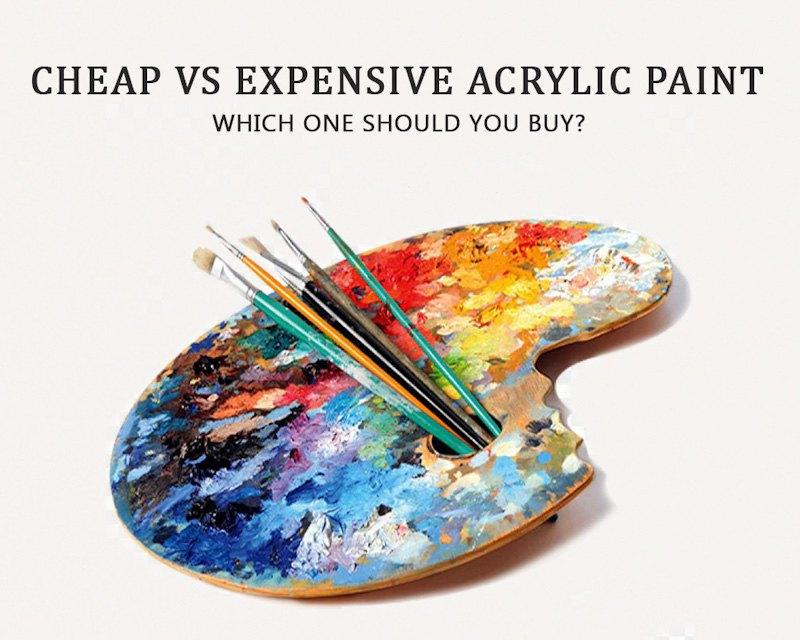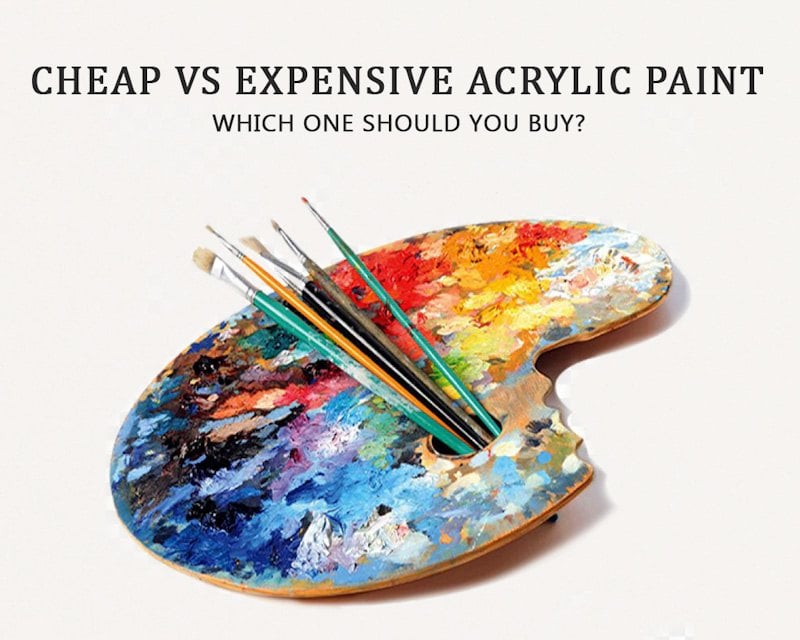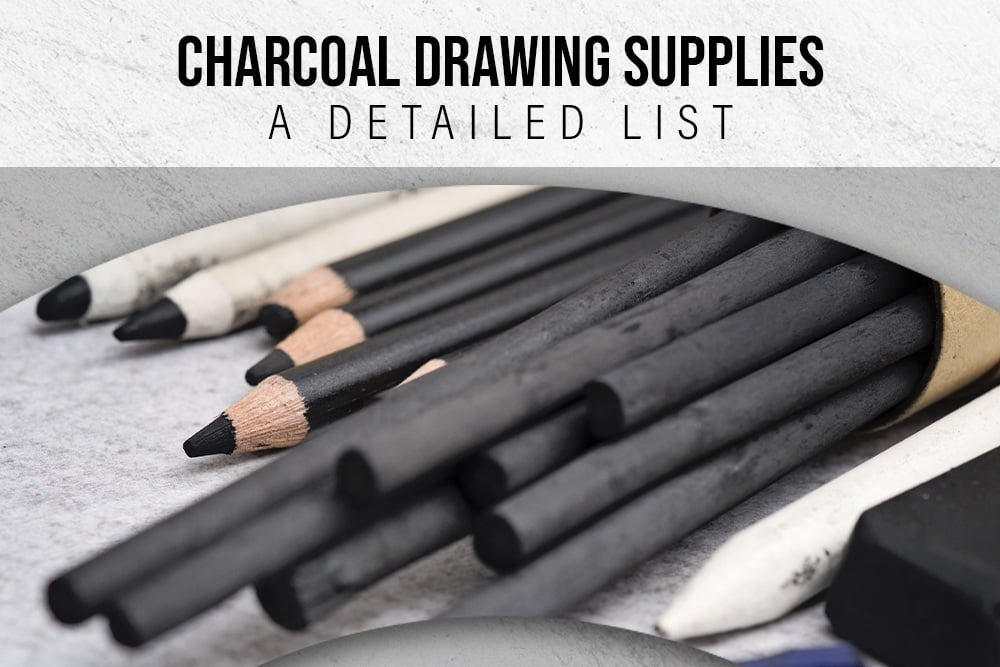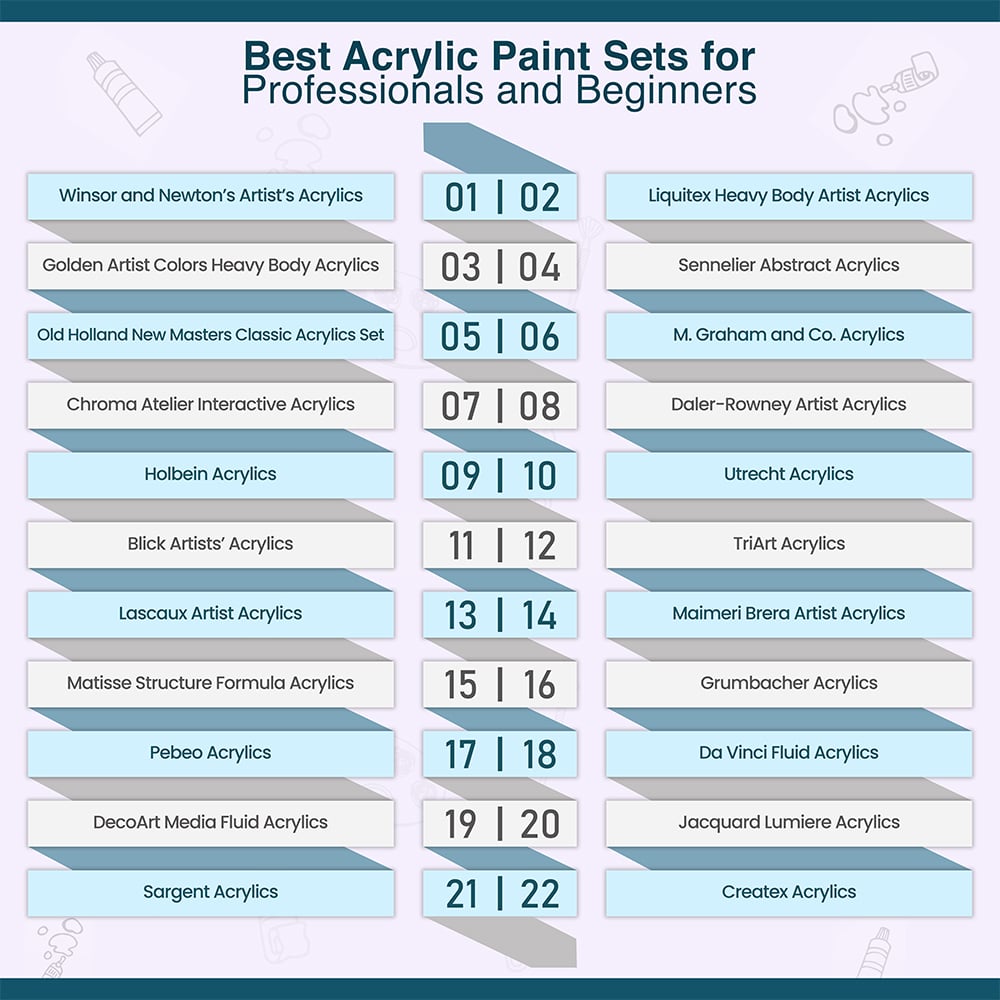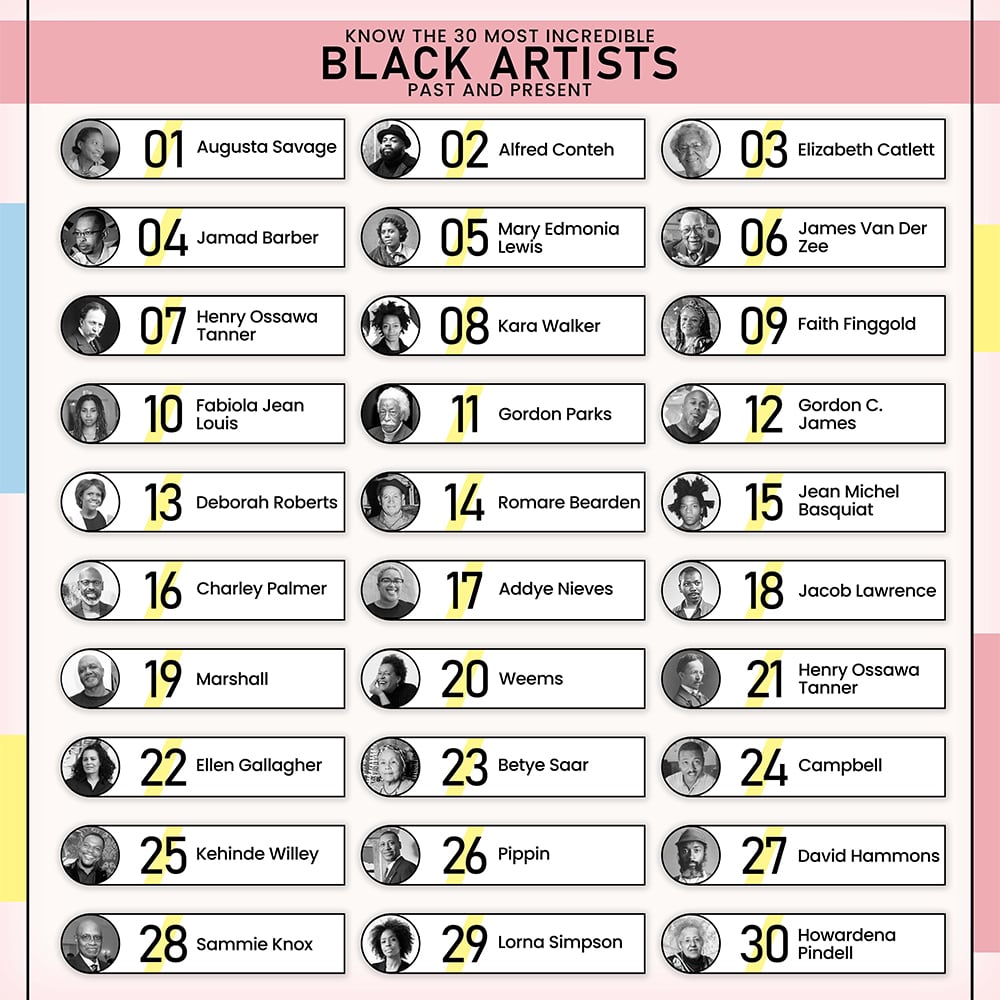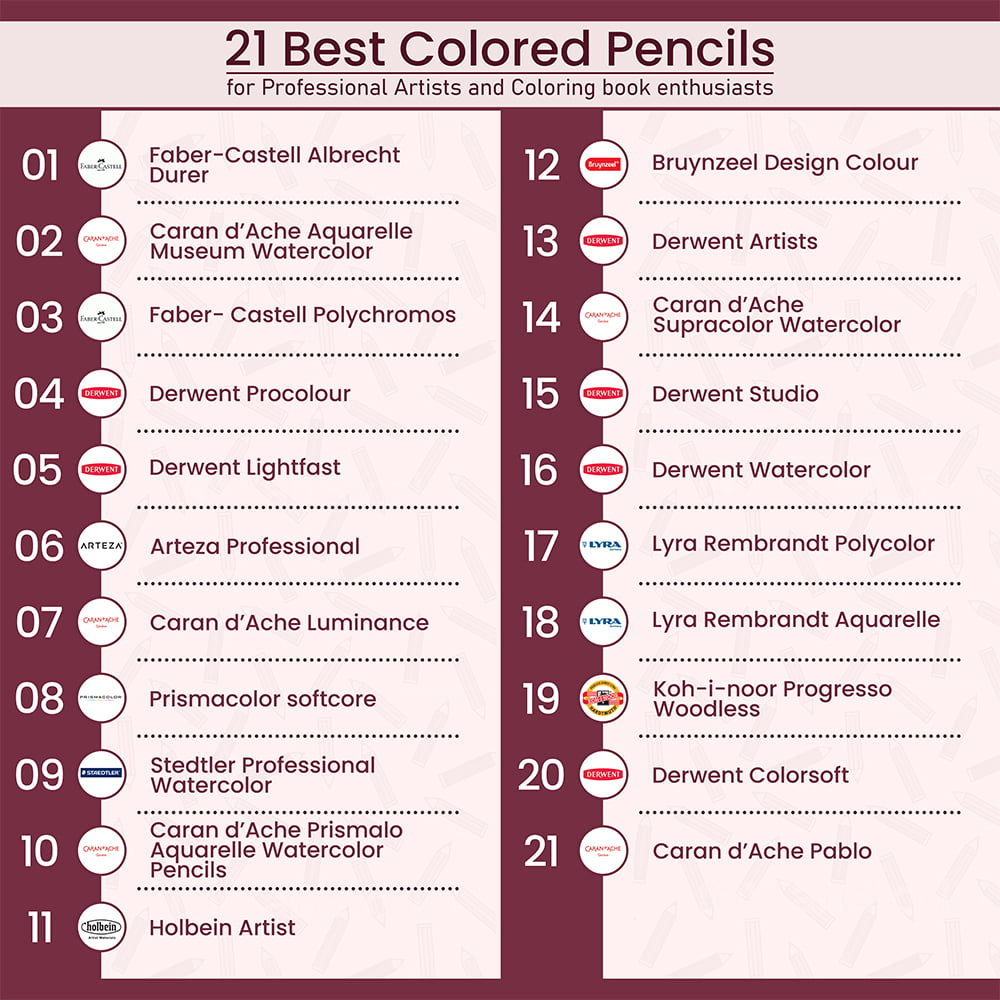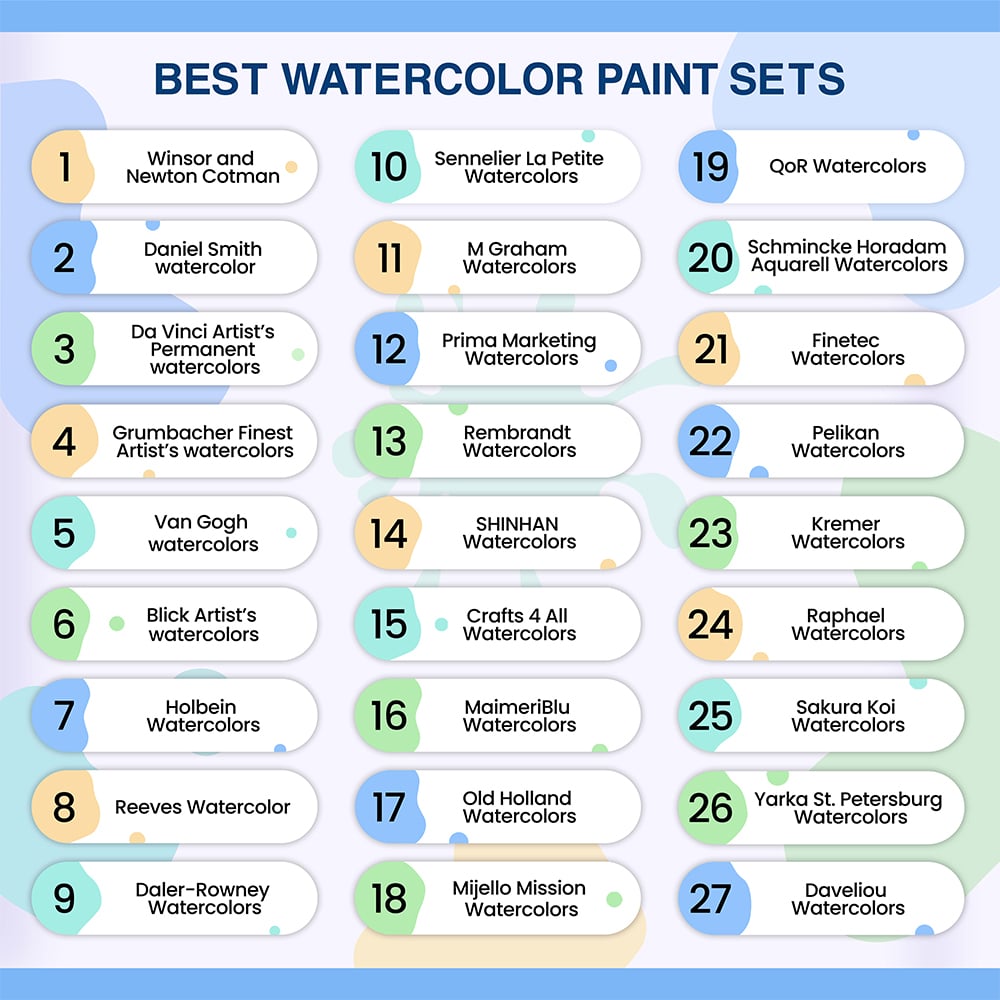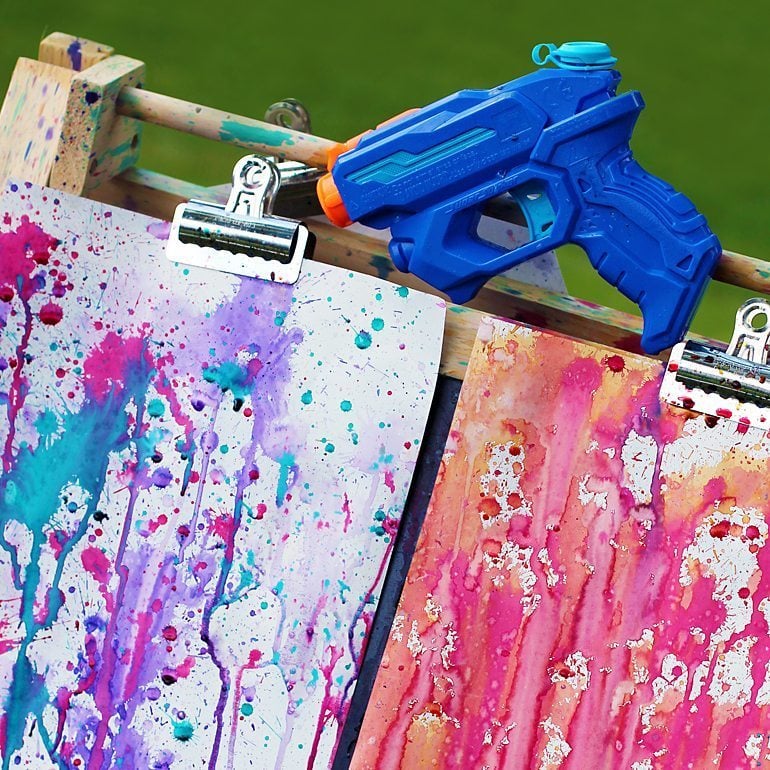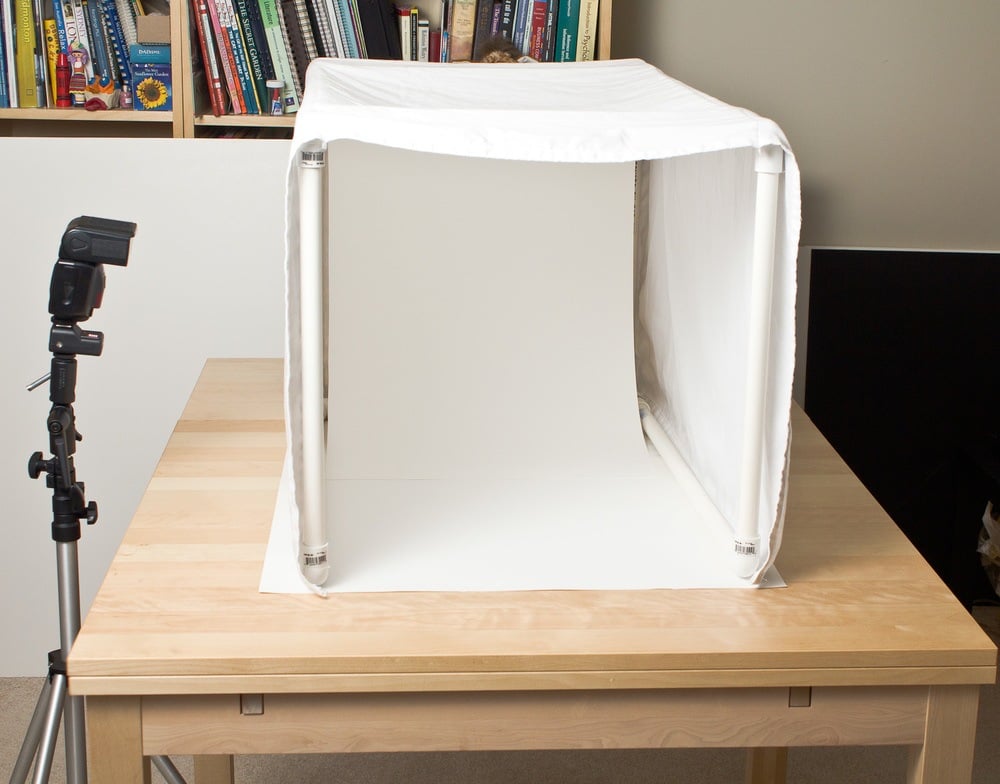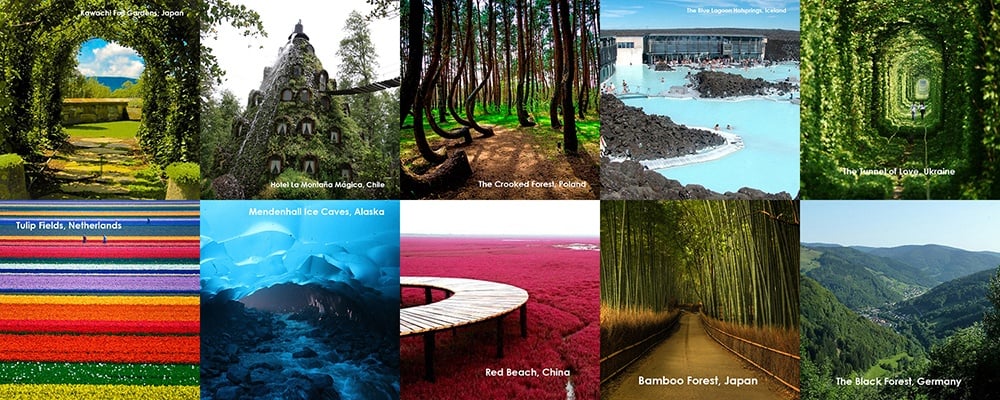Isn’t it exciting to embark on your art journey with acrylics as your art medium? Have you ever wondered why acrylics have massive popularity among artists? Why do many people prefer acrylic paints over any other painting medium?
With endless possibilities and opportunities, acrylic paints offer artists exceptional benefits and advantages. Over the decades, acrylics have captured the market unlike any other painting material. Today, acrylic paint is the go-to alternative for many artists, whether a novice or a professional.
Compared to oil paints or watercolors, acrylics are easy-to-use and beginner friendly. The versatility and durability of acrylic paintings make them a prominent and well-known art style. Their striking features and traits give art pieces an eye-catching and appealing look.
Yet, despite its efficacy, people find buying acrylics intimidating and daunting. Artists, especially beginners, get muddled over the best brands, prices, and variations of acrylics.
Thus, to drop this confusion, we bring forth a comprehensive guide on buying acrylic colors. This article will give you an in-depth idea about various acrylics, their distinctive features, grades, and results. We will also discuss the factors to consider before purchasing acrylic paints.
We will also analyze the brands offering premium-quality acrylics and their costing. So, let’s begin by understanding what acrylic paints are.
Understanding Acrylic Paints
Acrylic paints are fast-drying, water-based pigments dispersed in acrylic polymer emulsifiers. Bound in a synthetic resin, these paint particles give a brighter and more vivid impression. Some manufacturers produce superior high-quality acrylic colors. In contrast, other producers combine different chemical compositions to meet the market needs.
From vibrant artistic strokes to soothing delicate lines, acrylics leave mesmerizing impressions on the paper. The unique texture and rich glossy effect of acrylic paints give artworks a distinctive and remarkable finish.
As a beginner, experimenting and attempting hands-on acrylics is a fun activity. Acrylic paints allow artists to create the transparency of watercolors or dense layers of oil paints. It even helps make unique imprints unattainable by any other medium.
The adaptability, versatility, and durability of acrylic paints make them an even more exciting medium. Thus, painting with acrylics is the best way to introduce oneself to the beauty and charm of art mediums.

Credit: Amazon

Credit: Charlotte Observer
Historical Significance of Acrylic Paints
The first use of acrylic paints traces back to the early 1930s, with the development of acrylic resin dispersion. In the 1940s, acrylic emulsions started gaining popularity as people began using them to decorate households.
Soon after, many companies began commercial production and sale of acrylic paints in the art market. During the 1960s, acrylic paints gained widespread recognition because of their many benefits and innovative uses.
Some of the benefits that attracted artists included:
- Acrylic paint’s quick drying properties,
- Easy-to-use-and-clean feature,
- Intermixable and flexible usage on any painting surface, and
- Non-toxic quality deterring artists from inhaling fumes harmful to their health.
Some prominent artists who excelled in acrylic paintings were Andy Warhol, Mark Rothko, and Kenneth Noland. Thus, acrylic paints opened new avenues and spheres for art to bloom.

Credit: Sotheby's Auction

Credit: Artsy
Why is Acrylic Paint Preferred Over Other Mediums?
Many artists prefer working with acrylic paints over other painting sources. Though each art medium has some benefits and drawbacks, we will enlist why many artists choose acrylics instead of others.
1) Acrylics Dry Much Faster
A significant feature of acrylic paints that gives it an upper hand over any other painting medium is it dries up faster. Acrylics leverage artists to work effectively and efficiently in layers and levels. These colors dry out within 15-20 mins, allowing artists to create new coats without waiting too long for the old ones to dry up.
Unlike oil paintings, individuals do not have to wait days or hours when making an acrylic painting. This ensures fewer gaps and a single uninterrupted painting session. Artists can even view their final results and take corrective actions quickly. Thus, this property of acrylic paints makes them preferable among artists.
However, some artists dislike and are uncomfortable with the quick drying time. In such cases, one can add retarders or slow-drying agents to increase the drying speed. These agents delay the drying process, letting artists make alterations on the wet canvas.
2) A Perfect Medium for Art Education
The user-friendly and exceptional qualities of acrylic paints make them an art beginner’s first choice. Most art teachers start the painting sessions by introducing acrylic painting to their students. Because acrylics are so versatile, new painting techniques are simple for students to comprehend and adapt.
Acrylics are flexible with painting surfaces, allowing artists to experiment with new techniques. Trying out innovative methods and designs makes beginners confident and assured about their work.
The quick reversible trait of acrylic paints gives an extra edge to artists to rectify their mistakes within minutes. Thus, these benefits make acrylic paints the best medium for art educators and learners.

Credit: Art in Context
3) Acrylic Paints, An Adaptable and Durable Medium
Acrylic is a versatile medium that can adapt to any artistic expression. From classic canvas paintings to modern graffiti, acrylic paints conform to every art form. These colors suit every painting surface, including wooden panels, canvas, walls, and more.
Artists can create various effects and textures with the help of acrylic paints. Acrylics are versatile and can be used for diverse techniques like airbrushing, glazing, stippling, dabbing, and more, including the unique application method of painting. This feature helps artists create varied effects and textures with different paint compositions.
Furthermore, acrylics are resistant to cracking, flaking, or chalking out, making it a highly durable medium. One can thin out acrylics to give a watercolor effect or use the undiluted color to give an oil painting touch. So, the flexibility of these paints is appealing to artists.

Credit: Etta Vee

Credit: Singulart
4) Acrylic Paints Have Less Chemical Effect
Compared to other painting mediums, acrylic paints are safer as they release no or less chemical fumes when used. These water-based pigments do not need solvents or harsh chemicals for application.
The solvent agents of oil paints are toxic and hazardous, making artists inhale dangerous fumes. In contrast, chemical-resistant acrylics are a more secure option for artists. Thus, they are environment-friendly and better than traditional color pigments.
5) Acrylic Paints for Covering Background Layers
Acrylic paints come in hundreds of vibrant shades and hues. They include neutrals, metallics, fluorescents, and more. The higher pigment load of the bright acrylic colors assists artists in creating expressive artwork.
While many artists use acrylics as their primary medium, some prefer acrylics to speed up their initial painting process. While making oil paintings, many artists coat their base layer with acrylics as they are easy to use. Covering the background layers with acrylics speeds up the painting process as acrylics dry quickly.
The rich-pigmented acrylic paints block in large areas with distinct colors and tones. The deep hues and shades of colors blend to form perfect tones fit for covering backgrounds. Thus, professional artists often use them to create layers and block shapes.

Credit: Pinterest

Credit: iStock
Today, acrylic paints continue to evolve with the innovation of new formulations, mediums, styles, and genres. Every artist tries to bring innovation and creativity to their painting process with the help of such versatile mediums. Thus, all these benefits make acrylic paints a popular choice among artists.
Factors that Determine the Price of Acrylic Paints
Every acrylic paint brand has its unique characteristics and properties. The price of each paint tube or jar depends on the quality, pigment load, and many other aspects. Choosing a suitable acrylic paint that fits an artist’s preferences and budget can be puzzling.
Thus, to make your selection process more accessible, we bring you the factors that decide the cost of acrylic paint brands. This section will help you discover the reasons behind cheap versus expensive acrylic paints, their quality difference, etc.
Here’s a quick rundown of the aspects that determine the pricing of most paints:
1) Paint Quality
The most significant factor that decides the price of an acrylic medium is its quality. Quality refers to the concentration and pigment load of colors in a mixture and the imprints it forms on the paper. Acrylic paints are divided into two grades- student quality and artist quality.
-
Student Quality
Student-quality acrylics are pigments with less color concentration and low archival quality. These sets are the beginners’ and art learners’ preferred choices. These student paints have a more affordable price range, cheaper than the artist's quality. Student quality acrylics have a limited range of shades and give less coverage.
Yet, these student-grade paints are great for underpainting on large-scale paintings. Artists with a lower budget can begin their art journey with these paints and then layer the final coating using a professional-grade acrylic set.

Credit: eBay
-
Artist Quality
Artist-quality paints are more concentrated and pigmented acrylics. Professional-quality acrylics leave intense, deep stains with a smoother consistency. These colorants are available in an extensive range of vibrant shades and tints.
Such paints have finely grounded pigments, which give high permanence and lightfastness. But, these premium qualities make these professional colors much more expensive than student paints.
Artist-quality paints are best for professionals and experts who regularly sell commissioned works or have mastered the techniques of acrylics. New learners should start their acrylic journey with student-quality paints. This will ensure that you learn acrylic methods and strategies at a minimal cost. Once familiarized, you may shift to the premium ones.

Credit: Paint Wild

Credit: Watercolor Misfit
2) Colors
Professionals claim that the color pigment of acrylics is a major determining factor for its price. While some stains are cheaper, others are pricier. This variation happens because some pigments are difficult to make.
Pigments like cadmium and cobalt are much more expensive, while ochres and umbers are cheaper. The price of pigments depends upon the cost of producing them. However, some brands have cheaper acrylic paints made from synthetic dyes to control costs.
To keep the price right, picking four-five essential primary colors at the start is recommendable for beginners. You can choose titanium white, yellow ochre, ultramarine, raw sienna, and other basics.
3) Tube or Jar
The container that retains the pigment also impacts the overall price. A paint tube's price compared to a big jar is costlier. The ratio of volume to price is higher in tubes. Paint tubes are small and portable, but you can buy big pots to save a few dollars.
These pigment jars have vast quantities of paint and are much more economical than tubes. But, as beginners, you must pick acrylic paint tubes first and then shift to pots after getting familiar.

Credit: Pinterest
4) Viscosity
Viscosity refers to the consistency and thickness of the colors. High-viscosity paints render the smooth, buttery effect of oil paints. The classifications based on density include heavy body, soft body, and fluid acrylics.
Heavy-body acrylics have a thick consistency with smooth blendable and mixing qualities. These pigments give a creamy imprint on the painting surfaces. On the contrary, fluid acrylics are thinner, with flowy consistency and texture. These acrylics are perfect for spraying, airbrushing, and other detailed techniques.
Soft body acrylics have medium viscosity and are excellent for making conventional art pieces. These paints are in the middle range and create texture that is neither too thick nor too liquidy. The price based on viscosity varies from brand to brand. While some brands can sell high-body acrylic paints cheaply, others will charge higher.


Credit: Jackson’s Art Supplies
Other factors differentiating cheap acrylic paints from expensive ones are drying periods, brands, permanence, lightfastness, and tinting strength.
Cheap vs. Expensive Acrylic Paint
Acrylic paints are pigments bonded with acrylic polymers to form a painting consistency. With the increasing prices of acrylics, people hesitate to buy them or settle for cheaper products. So, let’s differentiate between the two qualities.
1) Cheap Acrylic Paints
Though cheap acrylic paints cost much less than artist-quality acrylics, they have certain drawbacks. Cheap acrylic paint has a higher concentration of binding agents than pigment. This feature gives a dull imprint with reduced coverage.
Cheap acrylic paints, or student-quality paints, have narrower color variations. This property makes it challenging to find an exact color tone and mix shades to make an accurate one. Cheap acrylic paints have a distinct consistency from professional ones and can also create a chalky effect on the canvas.
Despite its disadvantages, these student-quality paints are best for beginners and newbies. These colors help new learners experiment to understand how to work and react with colors. It also assists them in differentiating between other painting mediums and acrylics. These cheap paints are best for learning new acrylic techniques, methods, and approaches.
2) Expensive Acrylic Paints
Expensive acrylics or professional-grade paints have several benefits. These paints have a higher pigment load and are more vibrant. The smooth consistency of the colors gives the canvas a flowy feel, creating beautiful impressions.
Professional quality paints come in an extensive color range, which one can blend to make shades out of imagination. These paints are much more durable and have excellent permanence ratings. Yet, one drawback of artist-quality paints is their price. These paints are much costlier than the cheap ones and beneficial for those who have mastered acrylic paintings.
Also read: Turn Photos into Polaroids with Mobile Apps
Things to Consider When Purchasing Acrylic Paints
Today, there are hundreds of brands selling acrylic paints in the market. Every brand has its quality and pricing, depending upon its formulas, consistencies, features, and unique presentations.
While some brands offer cheap acrylic paint pots, others present expensive small packing. This problem of plenty makes it even more confusing for artists to choose the best acrylics. Artists, especially novices, get confused over available brands and their labels.
So, acquiring a thorough knowledge of acrylic paints is necessary for choosing the right brand. Here we enlist certain elements you must analyze before buying acrylics.
1) Series Number
As soon as you pick an acrylic paint set from the art store’s rack, you will find a series number. Every paint tube of any brand has a series number printed on the front. This series number refers to the relative price of the color.
As a beginner, you may need help understanding its significance. The lower the series number, the cheaper its price. Likewise, as the series number increases, the cost of the paint tube also increases. For example, a paint tube with series number 5 will be much more expensive than one with number 2.
But, it is essential to note that these series numbers are mainly a pricing strategy and are not related to the quality of the product. The paint series records the charge that goes into making paint. It ensures that the manufacturers do not charge high costs for ones that have low making prices, or vice-versa.
For instance, the pigment yellow ochre will have series number 1 in every brand’s painting set. The reason behind this is yellow ochre making is inexpensive. In contrast, cobalt blue paint will have a higher number in every pack, as it is pricey to produce. Thus, the color will have the same series number regardless of the brand and quality. Also, various hues and color tints can be grouped under a single series number.

Credit: Live About

Credit: Joe’s Art Stuff
2) ASTM Rating
ASTM International refers to the American Society for Testing and Materials. The ASTM organization develops and publishes technical information on products and services. The ASTM rating specifies acrylic paints' physical properties, lightfastness, drying time, and pigment performance.
While purchasing acrylics, considering the ASTM rating for lightfastness is crucial. Lightfastness refers to the ability of a color to withstand the test of time. Also known as permanence, this factor determines the capacity of a pigment to resist fading when exposed to light for a long time.
The ASTM rating system for painting mediums includes these grades:
- ASTM I - Excellent Lightfastness
Pigments with ASTM I rating showcase no discoloration or fading even after decades of exposure to light. These materials are best to work with when going for outdoor applications.
- ASTM II - Very Good Lightfastness
ASTM II grade showcases that these materials are best to use in indoors. These colors fade away with time in areas with continuous exposure to UV rays.
- ASTM III - Marginal Permanence
Pigments with marginal permanence are fugitive and unsuitable for permanent works.

Credit: Seamless Expressions

Credit: Kimberly Click
3) Toxicity
Some paints contain Volatile Organic Compounds (VOCs) that harm human health. Toxic paints exhibit fumes that become significant risks for individuals who inhale them. Excessive inhaling of these toxic paints can cause serious health complications. These conditions may include respiratory problems, allergic reactions, skin issues, ingestions, etc.
Paints with harmful chemicals like cobalt, cadmium, magnesium, lead, and chromium have a smell in them. These paints are sold at a relatively lower price than others. These paints leave a negative impact on the human body and the environment.
Acrylic paints are non-toxic and harmless to people. Though safe, check acrylics before consuming them. You must go through the label and study its ingredients. So, always pick brands that are non-toxic and safe for your well-being.

Credit: Anna Bregman Portraits
4) Other Information To Look For
The label of every paint tube or jar has a list of information regarding the pigment. These details vary from brand to brand and are vital for consumers' awareness. Some elements present in the labeling section of paint containers are:
- Manufacturer’s name, i.e., the brand to which the paint belongs—for example, Golden, Liquitex, Winsor & Newton, Lascaux, etc.
- The common name of the pigment, for instance, titanium white, yellow ochre, cobalt blue, deep marine blue, etc.
- The color index name and a number represent every paint's unique index name and number. For example- PB for blue, PG for green, PR for red, etc.
- The series number of the color states its relative price.
- The binding agent used in the color pigment to bind the color particle. For example- acrylic polymer for suspending acrylic paints, gum binders for oil paints, etc.
- The lightfastness and permanence grade state the paint's efficiency to resist fading and discoloration.
- The volume of color pigment present in the paint tube or jar. For e.g.- 20 ml, 60 ml, 80 ml, and so on.
- Paint swatch of the pigment representing the texture and consistency of the color.

Credit: Just Paint

Credit: Live Art
5) Opacity
Opacity refers to the extent of transparency in paint. Every paint has a different level of opacity depending on its chemical makeup. For instance, an earthy pigment like ochre from crushed rock will have higher opacity. In comparison, artificial synthetic acrylics will be more transparent.
Most brands have the level of opacity marked on their paint tube. The standard abbreviations used to determine them are:
- T for transparency
- ST for semi-transparency
- SO for semi-opaque
- O for opaque colors
Opaque colors leave a solid, matte impression, while transparent ones leave a shining, glazing effect. So, before picking acrylics, check their opacity and buy ones that suit your requirements.

Credit: Acrylic Painting School

Credit: Celebrating Color
So next time you go to an art store to purchase acrylic paint, do not hesitate to check and compare the labelings. Look for different brands and analyze their pigments, ingredients, prices, color index, and other details. Keep experimenting with the brands; do not settle on your first attempt. Explore the entire range and then choose the one most suitable for you.
Best Acrylic Paint Brands With Price
By now, we have understood the various factors determining the cost of acrylic paints. We have also assessed the different aspects to look for while buying them.
Now, let us explore the best acrylic paint brands currently in the market. This segment will cover the salient points about the best acrylic paint sets for artists.
1) Winsor and Newton
One of the oldest paint manufacturers Winsor and Newton, has been producing colors for over 200 years. Winsor and Newton became a household brand famous among professionals and amateurs. Their evolving technology and formulations have developed a significant painting range.
Winsor and Newton have a spectrum of vibrant colors in acrylics with excellent working properties. Their acrylic colorants are suitable to work with because of their high pigmentation and smooth, creamy texture. Their finest acrylics, with great coverage, ensure textured effects and precise brush strokes.
Winsor and Newton’s acrylic paint sets come in two variants, suitable for beginners and experts. These include Winsor and Newton’s Galeria and Professional Acrylics Sets.
-
Winsor and Newton Galeria Acrylic Paint
Ideal for beginners, Galeria Acrylics come in student-quality grades with beautiful, pigmented colors. This color pack renders high-quality shades and tones at an affordable cost. These acrylics have excellent pigment mixing and archival paint quality. The application of colors goes in multiple coatings, allowing artists to create detailed, thin layers.
Galeria Acrylic Series has around 57 different color tones. Each acrylic set has varying paint quantity and volume. For example, some packs have 10 tubes with 20 ml color, while others have 20 colors with 12 ml quantity. The price starts from $18.22 and increases depending on the set's amount, volume, and color combinations.


Credit: Winsor and Newton
-
Winsor and Newton Professional Acrylic Paint
The professional acrylic colors have a high pigment load and are brighter, staying the same even after drying up. These artist-grade paints take the intensity and depth of colors to the next level. Better than Galeria Acrylic Series, these paints have excellent coverage and smooth application.
The professional range has around 80 high pigment load shades. Each colorant has premium quality consistency and blendability. Though these paints are high-end and expensive, their brilliance makes them worth the cost.
Generally, a 60ml professional acrylic tube costs $ 13, whereas 200ml tubes cost around $30. The best deal you can purchase is 12-color paint set with 20ml tubes costing $36.

Credit: Amazon

Credit: Art Attack
2) Liquitex
Liquitex, the first commercial water-based acrylic producer, has served artists for decades. With the best technical advances and new formulas, the innovators at Liquitex have created a world of acrylic paints. Their high-quality, pigment-rich colors are a treat to work with for every artist.
Liquitex offers two lines of acrylic paints based on the pigment load- Basic and Professional.
- Liquitex Basic Acrylic
Liquitex Basic Acrylic is a student-grade paint best for beginners and art learners. Though less concentrated, these paints have the same pigments as professional acrylics. The acrylic’s ultra-smooth buttery texture glides over the painting surface, giving it a superior coverage and finish.
Liquitex Basic Acrylic has the same pigment as professional ones, though in lesser concentration. The high pigment load of these paints makes for an incredible art palette for artists. Also, these acrylic paints complement other mediums resulting in beautiful mixed-media prints and creations.
Liquitex Basic Acrylic paint tubes are available in different sizes and sets. Every paint tube or jar has uniform pricing depending on the product’s volume or packing. The most popular collection of Liquitex student quality paint is the pack of six, with prices starting from $36.11.

Credit: KDS Art Store

Credit: Amazon
-
Liquitex Professional Acrylic
Liquitex professional acrylics are high-concentration saturated pigments with the best archival quality. One can create exceptional imprints and textures by mixing acrylic brushes in these colorants. These professional acrylics also come in two variations- heavy body and soft body.
Professional heavy-body acrylics have a thick, creamy texture with intense color saturation. These acrylics have excellent brushstroke retention and work well with a palette knife.
Soft-body acrylics have a thinner consistency than heavy-body paints. These delicate colors are best for smooth blending and layering. Soft body acrylics are best for pouring, airbrushing, printmaking, and glazing techniques. These paints work incredibly when making mixed media artwork or conventional paintings.


Credit: Amazon
3) Golden Artist Colors
Golden Paints provide an array of acrylics, including heavy body, fluid, and soft body paints. Though these painting mediums come with a pricey tag, their cost is worth the hype. Golden acrylic paint reflects the strength and quality of its formulation and pigmentation.
Golden professional heavy body paints are thick pigments available in a wide variety of shades and tones. Because of their thick consistency, these colors hold the brush well and leave a vivid and deep impression.
With the diversity of unique pure pigments, Golden Acrylics offer exceptional permanency. These colorants are available in paint tubes and big jars, suitable for many purposes.
In contrast, the thin consistency of fluid acrylic tints gives a watercolor approach to the art. Fluid acrylics' flexibility is appropriate for spraying, staining, or airbrushing techniques. These pigments allow smooth-flowing application while retaining color intensity and depth. It can be a best fit for making family Portraits.
Golden acrylics are available in sets or as single pieces, depending on the artist’s requirements. The costs depend on the volume, set size, and container form, starting from $8.74.

Credit: Amazon

Credit: Himalayan Fine Art
4) Lascaux
Lascaux is a Swiss prime art manufacturer and supplier producing superior-quality painting resources. Lascaux acrylic paints have a balanced range of hues and tints. The colors depend upon the saturation scale from opaque to transparent. These acrylics offer a smooth thick texture similar to that of oil paints. The luminosity and intensity of pigments create a semi-matte finish.
Lascaux acrylic’s 54 rich, high-concentrated tints are acidic-free and weather resistant. These properties make them suitable for outdoor usage. The paints are economical and call for value for money. Thus, working with Lascaux acrylic tubes is a hassle-free and easy-to-use task for artists at every level.

Credit: The Art Trading Company

Credit: Lascaux-The Spirit of Colors
5) Blick Studio Acrylics
Blick Studio is one of the largest and oldest art suppliers in the United States. This premium brand offers a line of professional-quality acrylic hues and pigments. The high saturation and pigmentation of paints ensure impactful color imprints.
Blick acrylics are permanent, lightfast, and versatile paints giving oil painting-like texture. These pigments are flexible with painting surfaces, including wooden panels, canvas, fabric, etc.
The 60 varied shades available to artists include neutrals, metallics, and fluorescents. These acrylics are obtainable in packings of 6, 12, 24, and so on, each with varied volume tubes. The price range goes from $5.55 to $48.99, according to the quantity and size.



Credit: Blick Art Materials
Conclusion
Over the years, acrylics have emerged as a remarkable painting medium to produce outstanding art pieces. The invention of acrylics is one of the priceless gifts to the art industry. Whether to create a decorative artwork or a favorite family portrait, acrylic paints have become people’s preferred medium.
Like other mediums, acrylic paints are significant in every artist’s toolkit. The rich texture and smooth finish of acrylics enhance artists' artworks. But, as beginners, one may get intimidated before buying or working with them.
But do not worry; with time and practice, you can master all your art skills. Before purchasing acrylics, have a clear goal and plan. Choose those brands that solve your purpose the best.
Also, remember that price is not the only quality criterion. Every brand makes all-quality paints, depending on the ratings and grades. So, experiment and pick pigments that help you add brilliance and exquisite finishing touches to your art.

